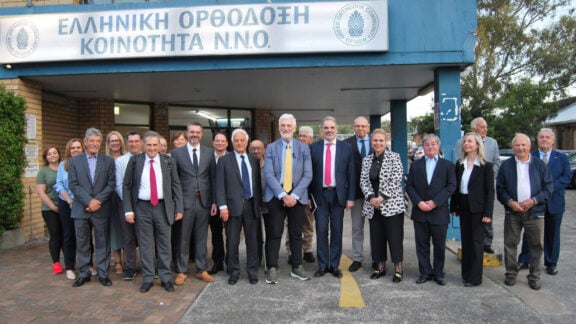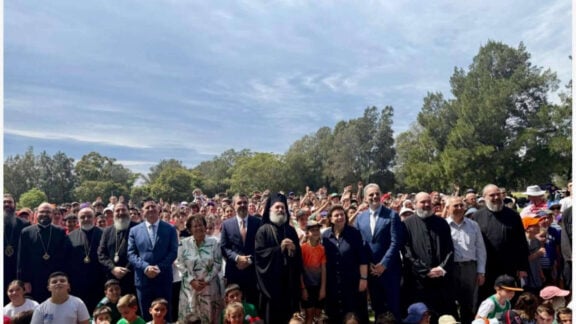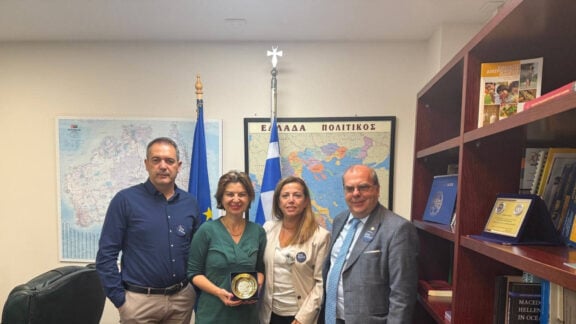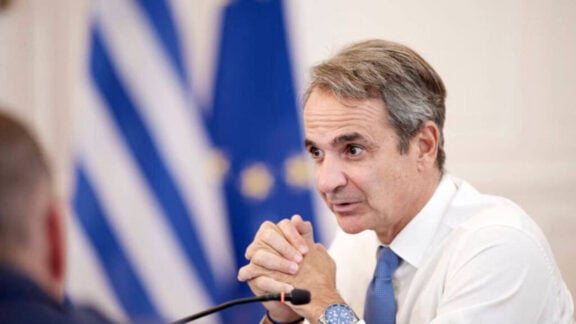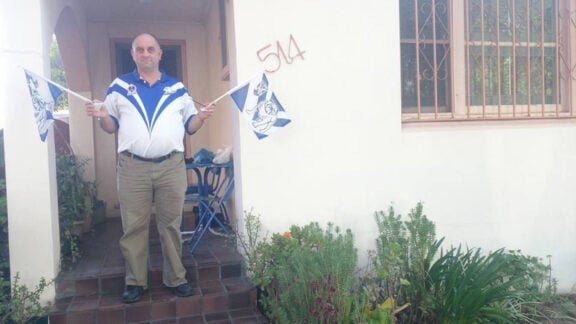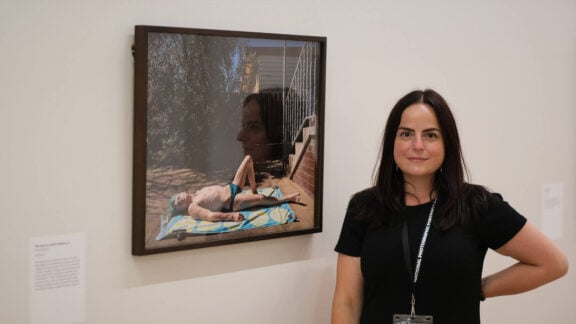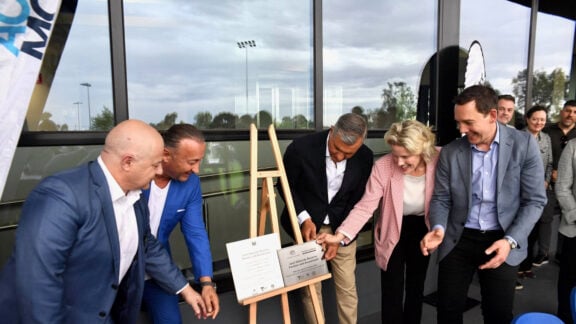Kia Australia has come under further scrutiny from Greek Australians for its ‘Tasman’ ute TV ad.
Earlier this week The Greek Herald reported that it had been contacted by some of its readers about the ad, which is part of the ‘Tasman Town’ campaign, featuring sport icons like Rafael Nadal and Collingwood great Peter Daicos.
The latter is seen working a marble business named “Macedonian Marble”, with its logo featuring a backdrop of what looks to be inspired by ancient Greek architectural imagery.
Aussie rules footy fans and Collingwood supporters will know that this is likely a nod to Daicos’s well-known nickname “The Macedonian Marvel’.
The issue however comes with the backdrop of the logo.
The Pan-Macedonian Association of Melbourne and Victoria (Pan Mac) expressed its disappointment with the ad in a letter sent to Neos Kosmos, signed by President Peter Stefanidis and Secretary Harry Tsairis.
Pan Mac called on Kia Australia and its creative partners to approach cultural references with “greater awareness and respect”.
“While the campaign may have been intended as light-hearted or humorous, it raises serious concerns about the cultural implications of combining Hellenic imagery with a version of Macedonian identity that is detached from its historical and cultural roots,” the letter reads.
“The issue is not with the words “Macedonian” or “marble”—both are deeply embedded in the Hellenic world.”
It notes that Macedonia is a region of northern Greece, home to a continuous Greek presence for millennia, and that the region is also famed for its high-quality marble quarries, a hallmark of Greek artistry and architecture.
“What is troubling is the use of these Hellenic cultural symbols in a context that implicitly supports a narrative that redefines “Macedonia” in non-Hellenic terms.”
“When commercial campaigns adopt ancient Greek symbols while disconnecting them from their Greek origin, it creates a misleading impression and contributes to the ongoing distortion of historical truth.”
Neos Kosmos editor-in-chief Sotiris Hatzimanolis likened the use of the symbol to the “misrepresentation of Uluru in Australian culture”.
He said “the way the symbol is presented is mis informative and insulting to the Greek community”.
Neos Kosmos has reached out to Kia Australia and Innocean, the creative agency behind the campaign, for comment.

